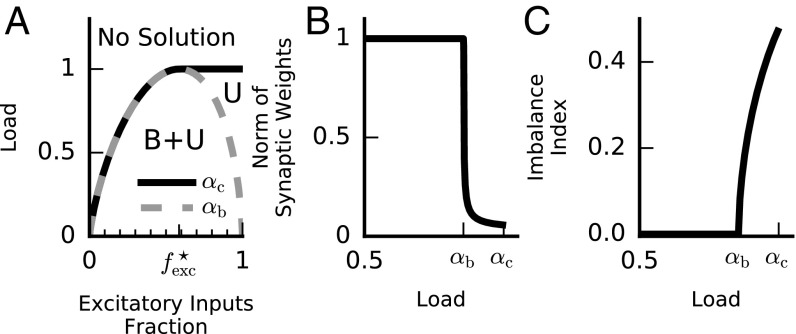Fig. 2.
Balanced and unbalanced solutions. (A) Perceptron solutions as a function of load and fraction of excitatory weights. Above the capacity line [, solid line] no solution exists. Balanced solutions exist only below the balanced capacity line [, dashed shaded line]. Between the balanced capacity and maximum capacity lines, only unbalanced solutions exist (U). On the other hand, below the balanced capacity line, unbalanced solutions coexist with balanced ones (B+U). (B) The norm of the synaptic weight vector of typical solutions as a function the load [in units of ]. Below the norm is clipped at its upper bound (in this case ). Above the norm collapses and is of order (shown here for ). (C) The input imbalance index (IB, Eq. 3) of typical solutions as a function of the load. Note the sharp onset of imbalance above . In B and C , yielding . See SI Materials and Methods for other parameters used. For simulation results see Fig. S1.

